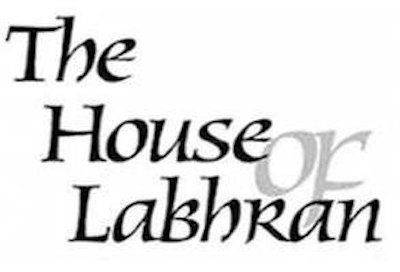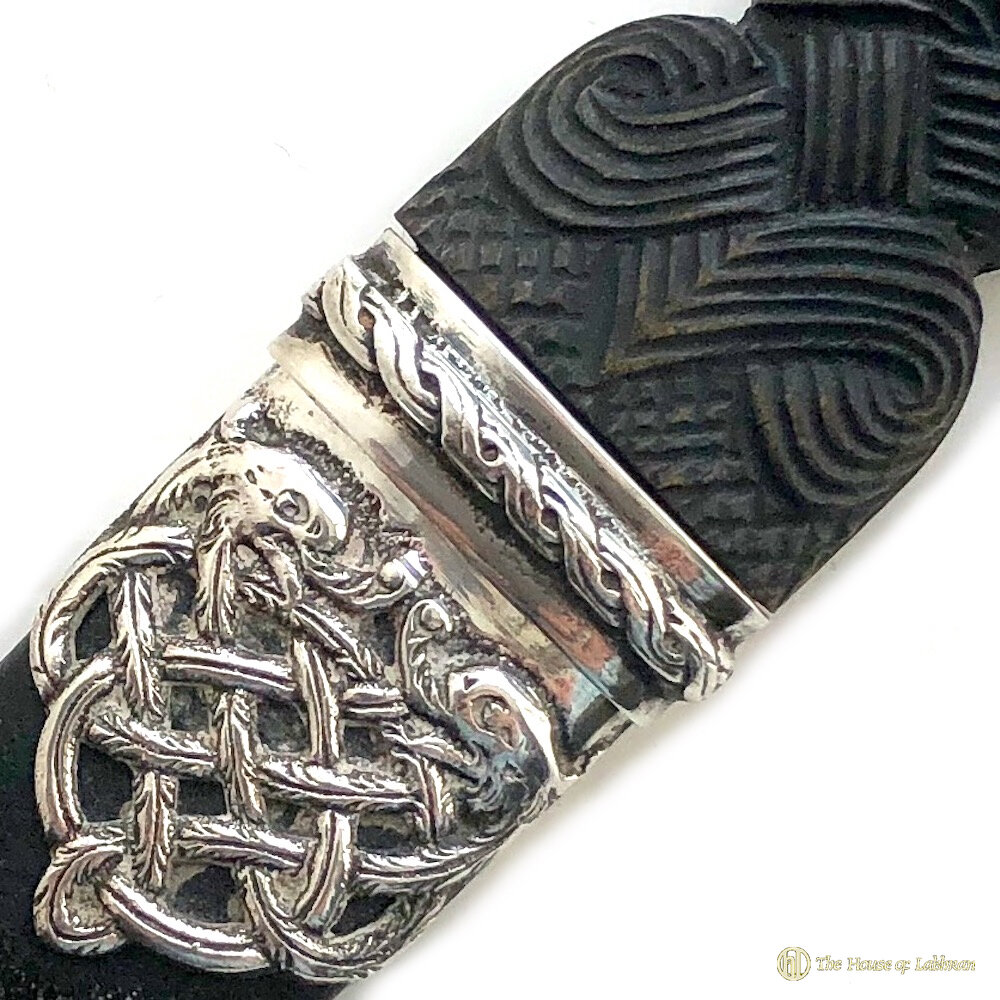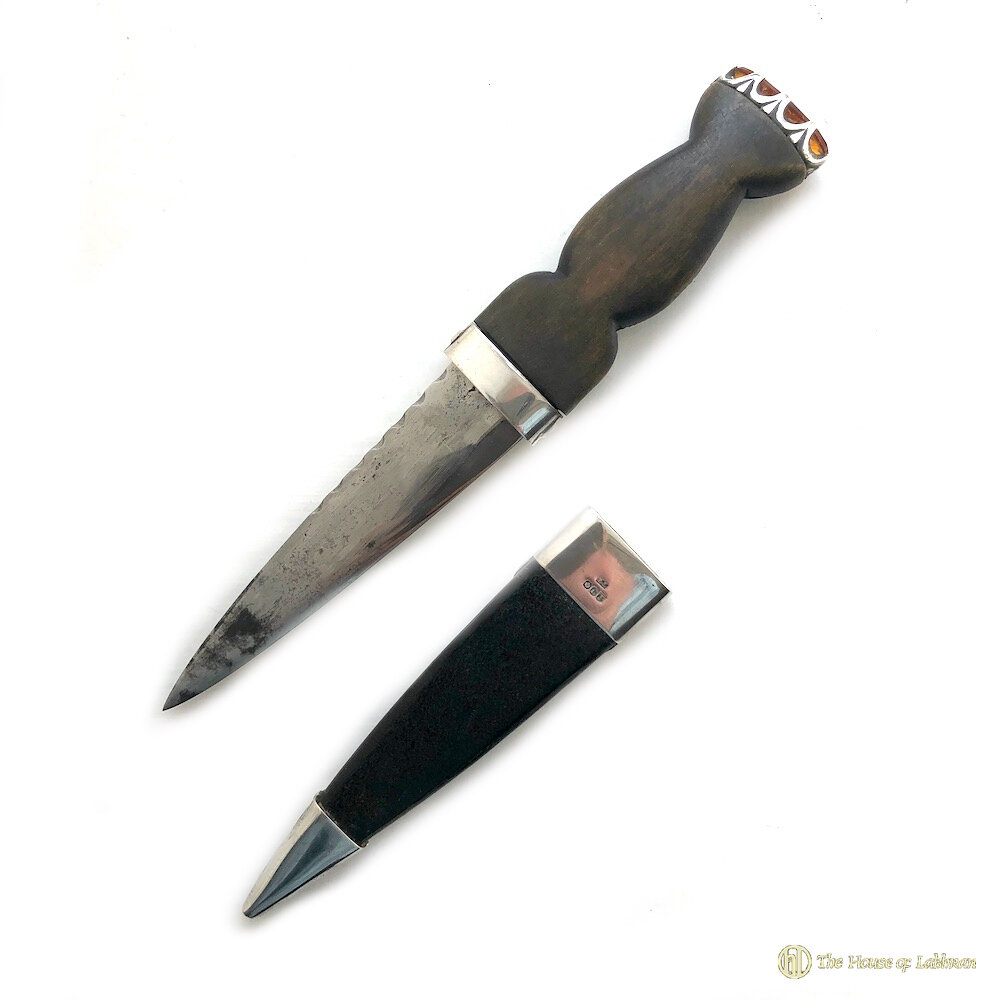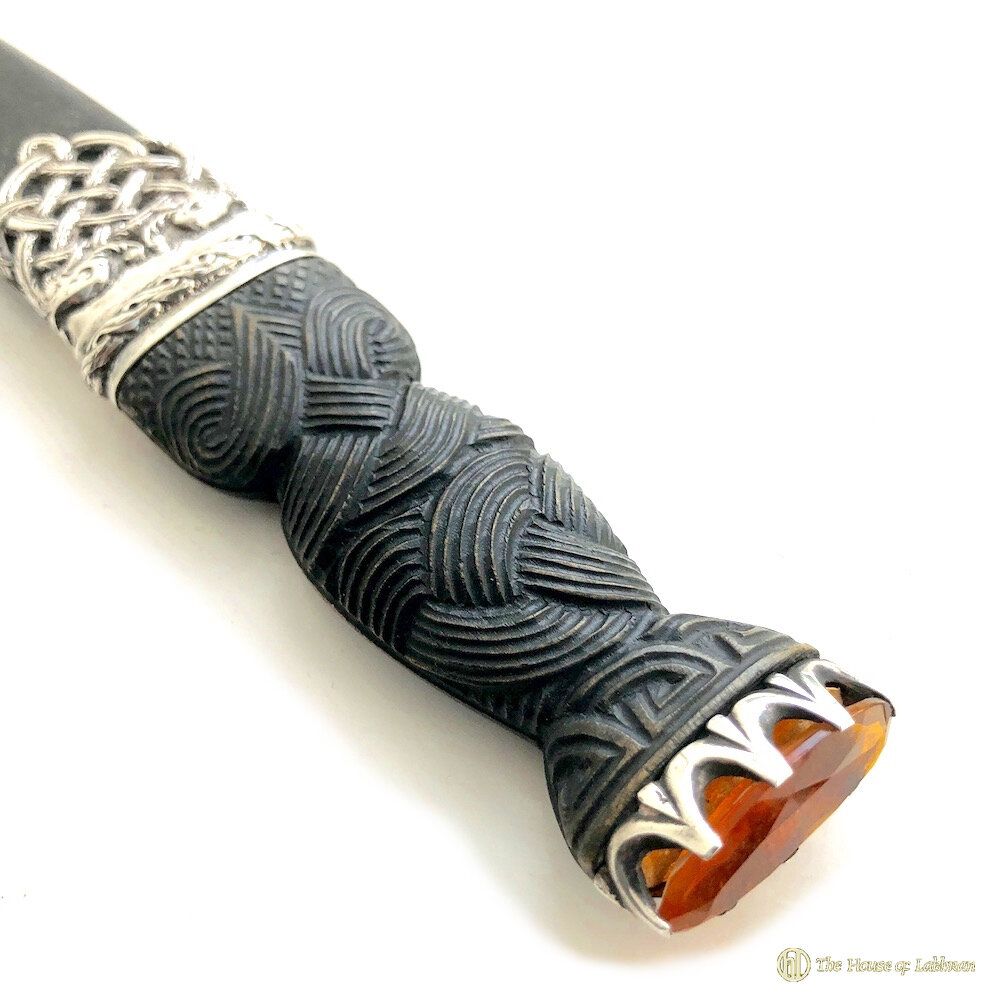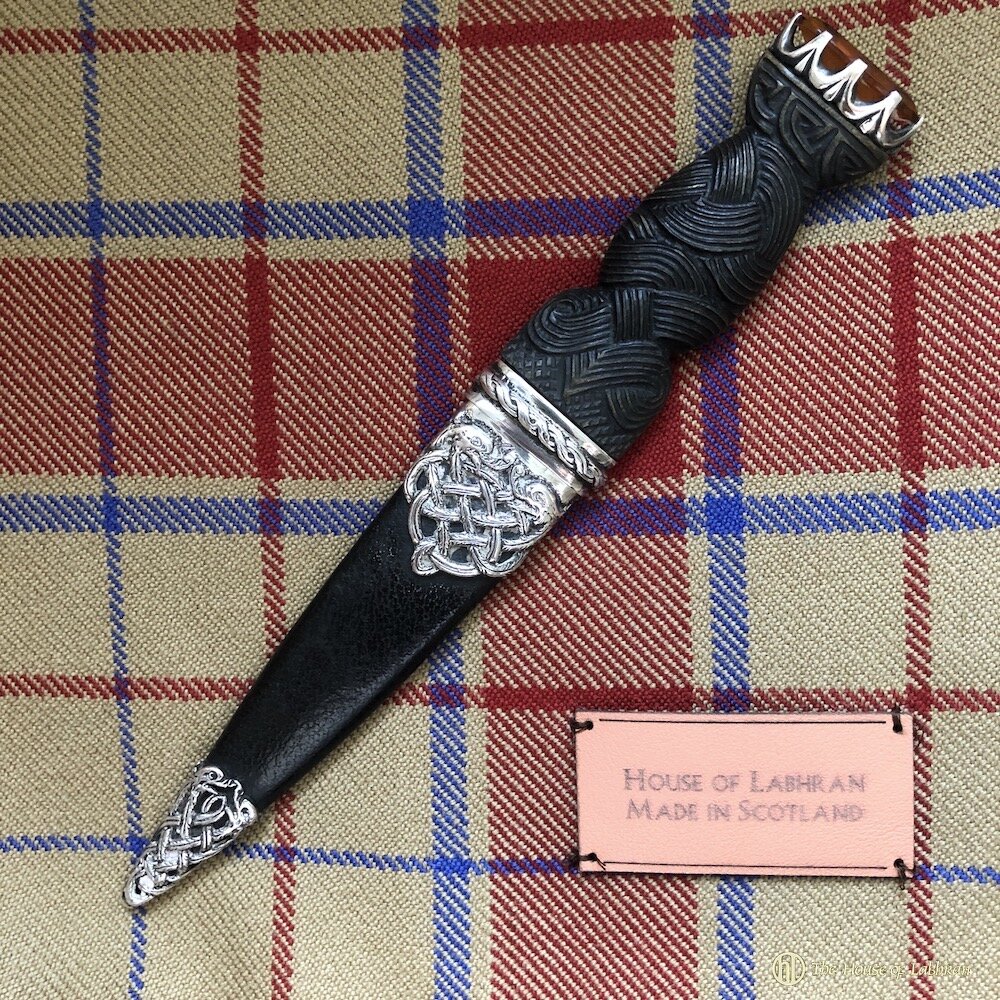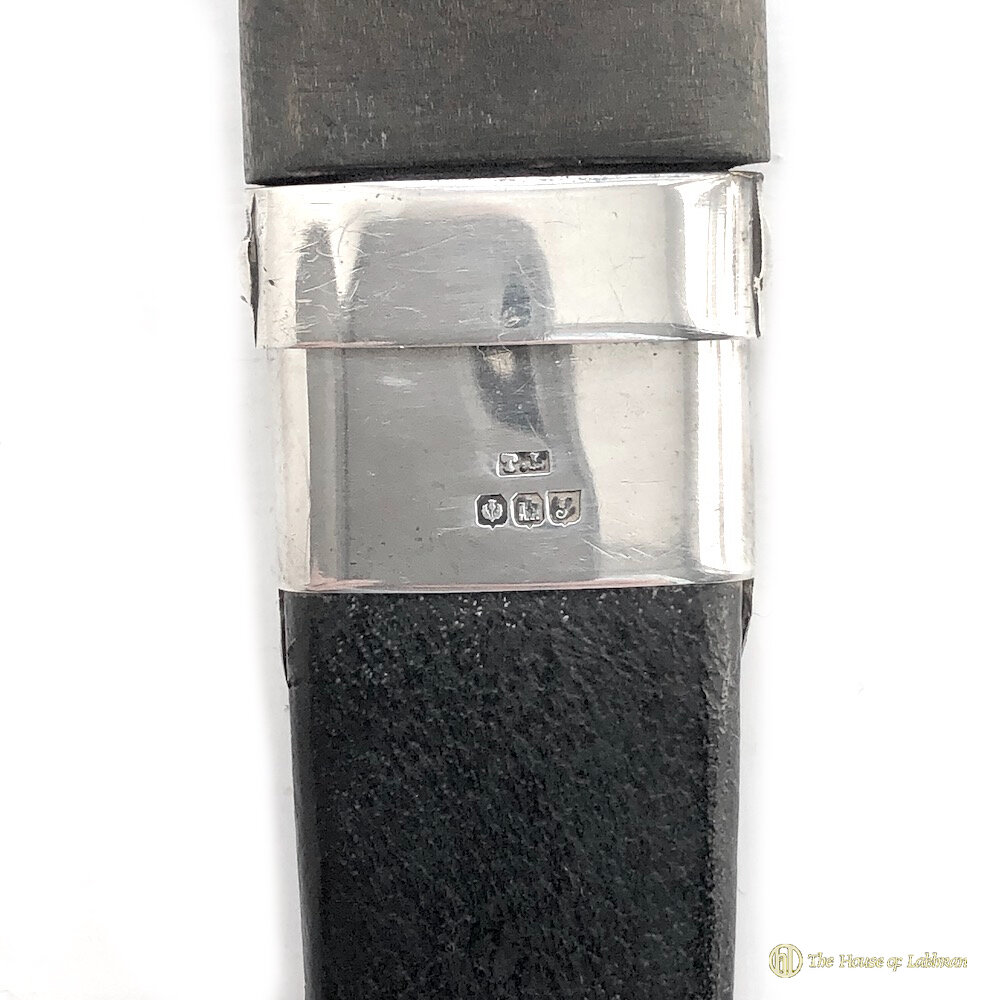1948 Silver Sgian Dubh Vintage Edinburgh – Zoomorphic Design
1948 Silver Sgian Dubh Vintage Edinburgh – Zoomorphic Design
Zoomorphic design traditions - Wood carving at Urnes Stave Church in Norway
1948 Silver Sgian Dubh Vintage Edinburgh – Zoomorphic Design
Fine Scottish antique sgian dubh with zoomorphic design engraving and carved rope pattern horn hilt and stone mounted top. In good used vintage condition.
Hallmarked 1948 Thomas Kerr Ebbutt Edinburgh
Size approx. 20.5cm
Thomas Kerr Ebbutt was a Scottish manufacturing jeweller, St David’s Square, Edinburgh. Thomas Ebbutt started work in 1896 and died in 1921. From the beginning he concentrated on making Highland Dress accoutrements. His company continued in business until 1977 when it was bought by Hamilton & Inches. His sgian dubhs are highly prized and respected for their beauty and high quality.
Zoomorphic Design in Celtic Arts & Crafts
The word zoomorphism derives from the Greek, meaning "animal", and "shape" or "form". In the context of art.
Much of the Celtic artistic tradition of interlaced design, or what is commonly referred to as Celtic knot work also includes stylised animals. Their heads, limbs, bodies, tongues and tails are used to help form the interlaced design and together, are a great part of the Celtic tradition.
Celtic art has many design elements in common with Viking, Germanic, the later Romanesque and Eastern European art, sharing many influences with each of these traditions.
The great Celtic gospel manuscripts of the early medieval period are often decorated with beasts and birds, many of which are not easily recognized species. The imagination and beauty expressed in the illuminated pages of the Book of Kells in Ireland.
In the Scottish tradition the zoomorphic designs followed from and merged with the early Pictish designs and was used to ornament a wide range of decorative arts. Stone carvings on early churches and wood carvings on musical instruments with mythical qualities like the traditional harp became popular.
In the workshops of silversmiths they used the designs to decorate in silver and brass. Embellishing dirks, sgian dubhs, plaid brooches, sporran cantles, belt buckles and fittings. This tradition has continued for over 1500 years and is still used today.
